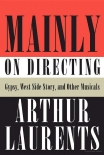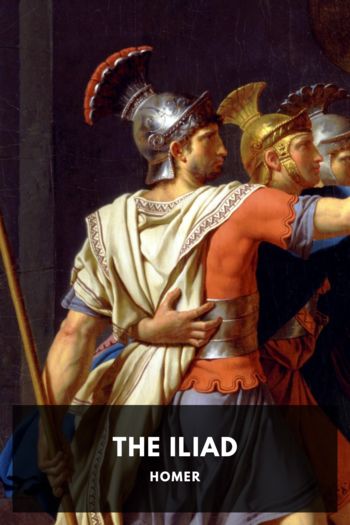Mainly on Directing, Arthur Laurents [best books for students to read TXT] 📗

- Author: Arthur Laurents
Book online «Mainly on Directing, Arthur Laurents [best books for students to read TXT] 📗». Author Arthur Laurents
Presumably the director chooses a design team for its excellence and expects or hopes it will and can follow his lead. Sometimes, as with Wicked, where great slabs of scenery have nothing to do with the story, perhaps the director didn't choose the designer—or perhaps he did but the designer went off on his own. How those slabs got on stage and stayed on stage is another question. In a musical where no one is completely in charge, anything can happen, and often does. When the director is in charge (as I was despite the Ninth Floor) and he's chosen a great design team (as I had despite the Ninth Floor), it's exciting to see what the designer does with the concept handed him. Marty Pakledinaz took mine to a place I hadn't imagined by adding a brilliant use of color to tell Rose's story.
In the opening scenes, the center of her world and her dreams is Baby June, too radiant in a Dutch-girl costume of a glaring sky blue. Louise's Dutch-boy costume was a cloudy gray-blue. All the other costumes were almost colorless. Uncle Jocko's tam and knee britches were a washed-out Scotch plaid; the balloon girl's balloons were the blandest balloons ever blown. Only Rose had color—not as bright as June's, but suiting Rose's vulgar taste.
One exception: she wore an old paint-smeared smock when she was working on the vaudeville numbers or Louise's strip. That paid off in the one dress Marty and I disagreed about. She was covered by the smock for “Rose's Turn;” when she came to “Here's Rose!” I wanted her to tear it open and there was Rose in that Red Dress. Marty said every Rose wore that Red Dress. He was right, but it was the color we were building to all night; and the use of that dress illustrated an important cautionary note for the director of a revival: merely because something was done with notable success before, don't throw it out unless you can do better. It's hard to do better than a Red Dress at the climax of Gypsy. No color can outdo red. Particularly when you don't see it coming, which, because of the smock, this time you didn't.
Marty held back color in the first act, but in the second he brought it out in an imaginative use few designers are capable of today. At the end of act one, the older Louise wears a shapeless, colorless blouse, as usual; in the first scene of act two, June is gone, Louise still wears a shapeless blouse, but the blouse is now blue, June's color—not June's Easter-egg blue but a blue strong enough to put Rose on guard and pay attention: Louise is now a challenge.
As the play moved into burlesque, there were the strippers. Of course they needed color, but not strong enough to overwhelm the deliberately chosen first moment of pure color: when Louise, for the first time in a dress, looks in a pier glass and says: “Momma, I'm a pretty girl.”
Instead of putting Louise in a black evening gown for her first awkward strip, as had been done in the very first Gypsy—what stripper in a cheesy burlesque house would wear black?—Marty put her in a soft lavender, a color Tessie Tura would wear, because the dress is one Louise presumably has been making for her. And instead of pouring Louise into a shimmering sequined Vegas gown for the last scene, as every other designer had, Marty slipped her into a draped gray silk dress with long sleeves and a high neck. Elegant but too quiet? Not what Gypsy Rose Lee would wear? The dress had a slit up the back bordered with rhinestones that weren't seen until at the end when Gypsy turned and her back was to the audience as she walked out on Rose.
When I asked Marty why he put Louise in that chic gray dress, he quoted Rose's line to Louise: “You look like you should speak French.”
A designer motivated by the text! All designers read the script; their designs show if they understand it. If they don't, the director must explain it to them. If the designs still don't show understanding, the director tries again. After that, accept you made the wrong choice and move on. Choosing Marty was hitting a bull's-eye.
Jack Viertel agreed with the Ninth Floor about the placement of the orchestra. The junta was determined it be on stage because it always was on stage for Encores! I was equally determined it not be on stage for Gypsy, which they still wouldn't admit wasn't an Encores! production (they never did). For them, the orchestra on stage left less room for scenery, thus making the physical production cheaper and freeing the pit for more top-price seats. For me, the orchestra on stage would expose the actors to playing a play, not a précis, in front of an unwanted audience of musicians on a bandstand as in Encores!
It wasn't too hard to win. It's not difficult to awaken guilt about money in most opponents in the theatre, particularly City Center, where it never slept. “Star” is a synonym for “money” there; Gypsy was to be the first production in the new City Center series, Summer Stars. Patti LuPone was a star. Patti didn't want to play intimate scenes in front of an orchestra. They agreed the orchestra would stay in the pit where it belonged.
Except that it didn't.
By the time the company got on the stage for rehearsal, the orchestra was on stage. With my full agreement. What had happened? Money.
Jack Viertel came to me with a proposal: he could get an extra $200,000 out of the Ninth Floor for





Comments (0)